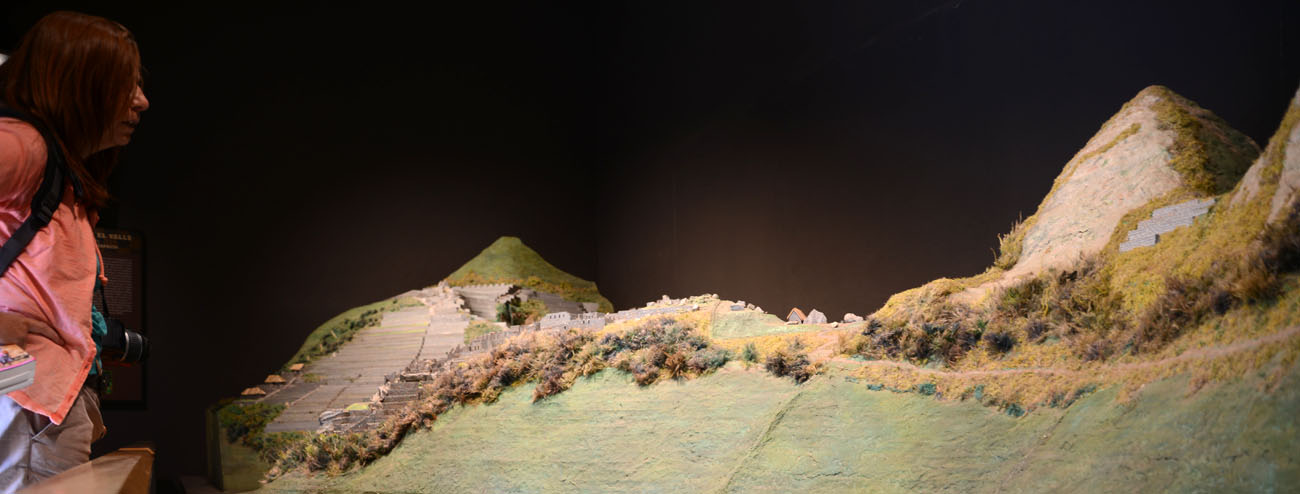
One of the exhibition rooms, upstairs, also contains a great model of M.P.
Macchu Pichu Museum
 |
One of the exhibition rooms, upstairs, also contains a great model of M.P. |
 |
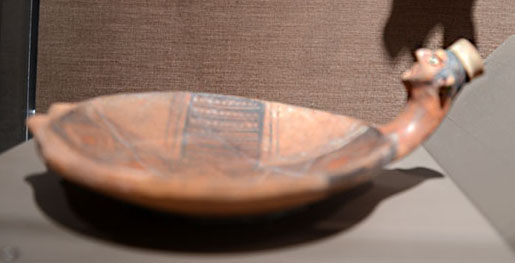 |
| This piece reminds me of something very similar that I saw at the Templo Mayor Museum (Aztec) in Mexico City. |
 |
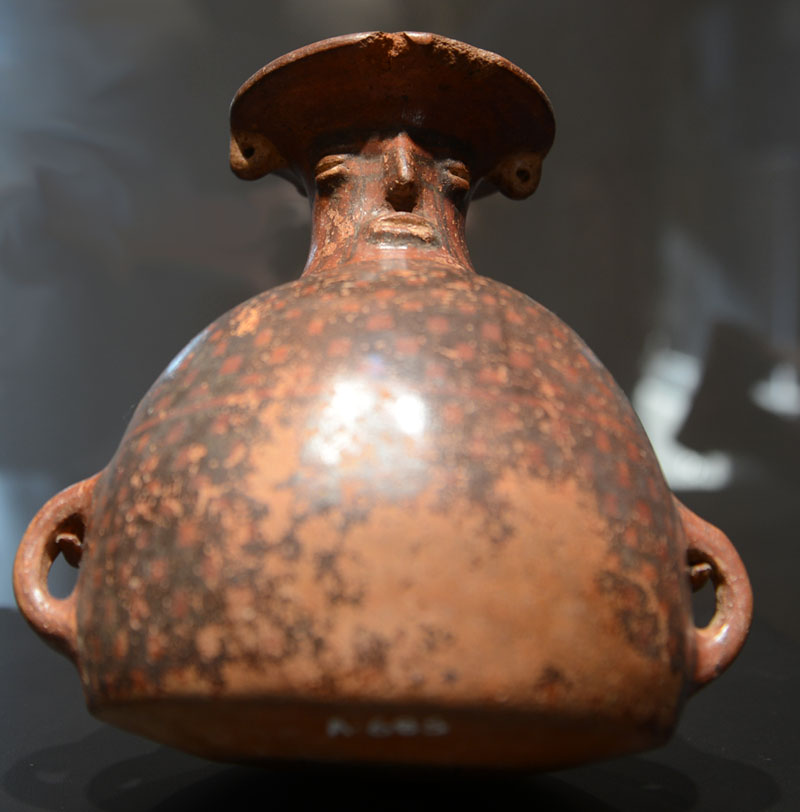 |
Clearly, the other area of great expertise was ceramics. |
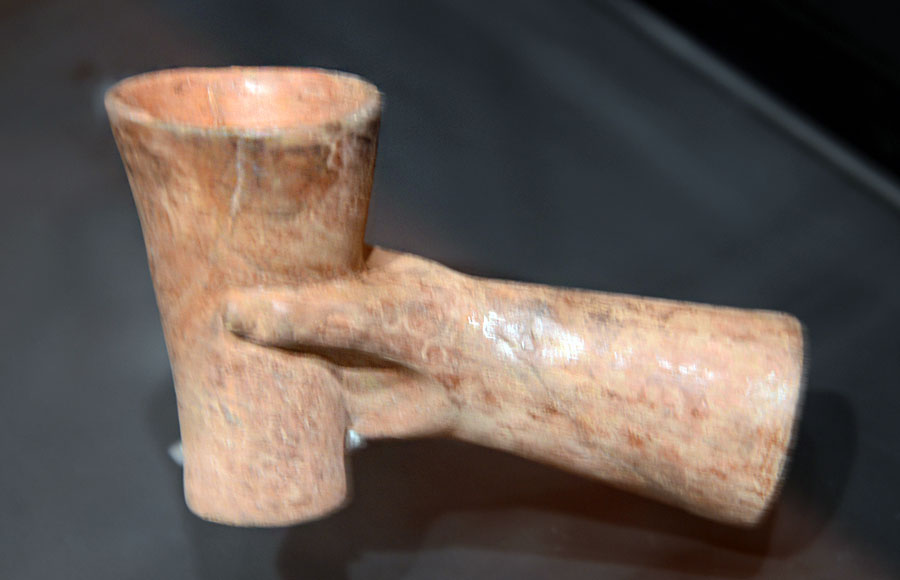 |
I thought this particularly amusing. You hold the hand that holds the cup that holds your drink. |
 |
There are also displays of human remains and what they mean. Newer interpretation shows that M.P. was not a place that the Inca king escaped to, to avoid the conquering Spanish, but just a royal retreat. When the first expedition went to M.P., the location was quite well known to the locals. They just never told anyone about it. Here you can see the typical cranial deformation that shaped the head in a way that was fashionable by the Inca (probably the nobles and royals). |
 |
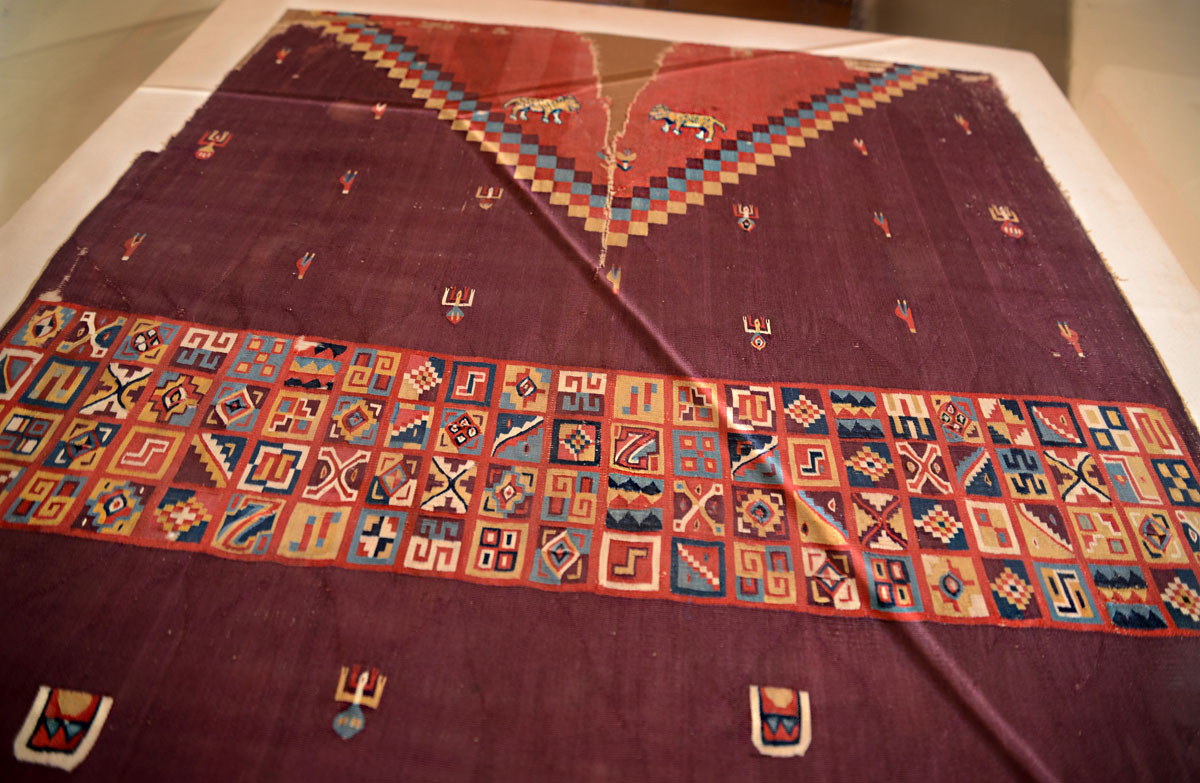 |
A bright and georgous cloth (a tunic?) recovered from M.P. The Inca held textiles in high esteeem. |
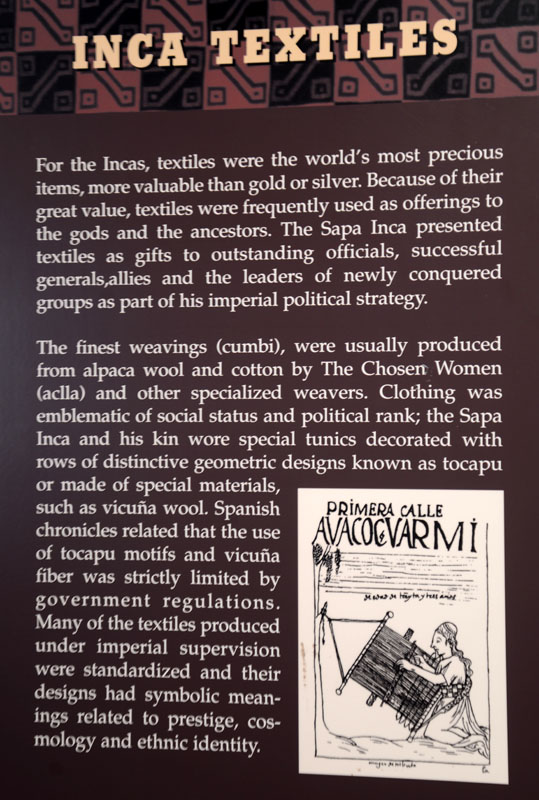 |
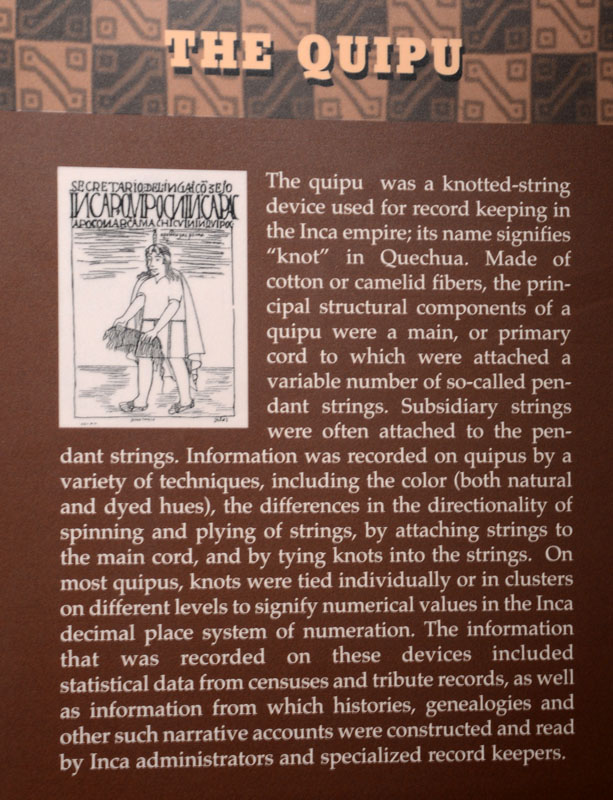 |
 |
When I asked the question, while at Kuelap, how the Incas were communicating over long distances, I was told of these ropes and knots. The first thing that came to mind was the Asian abacus and I replied that such a method of communication would only be good for numerical values, e.g. how many enemy were coming, or how much tax had been collected, or how much agricultural yield there might have been in a certain area. Stuff like that. Not until I got here, to this museum, did I learn that I was correct. |
 |
Some nice recreations of life at M.P. It was a royal retreat, after all. |